
© 2010-2022 by Fine Arts of the Southwest, Inc. All rights reserved.
Unauthorized reproduction or use is strictly prohibited by law.
A splendid Navajo ingot-silver bracelet with matched
Lone Mountain or Nevada Blue spiderweb turquoise stones possibly by Ambrose Roanhorse, c.1930’s
THIS WONDERFUL BRACELET is a high-water mark of traditional Navajo silversmithing in the 20th century, both aesthetically and technically, from its overall design to the three spectacular matched Nevada spiderweb turquoise stones, to the elaborate and beautifully-applied stamp work decoration. In our opinions, this piece clearly reveals the creative mind and skilled hands of the distinguished Ambrose Roanhorse; master Navajo silversmith and influential silversmithing instructor; co-Founder and first Director of The Navajo Arts and Crafts Guild, Director of the Jewelry programs at The Santa Fe and Fort Wingate, NM Indian Schools and supervisor and administrator of the U.S. Government's Indian Arts and Crafts Board’s "U.S. Navajo" and "U.S. Zuni” quality assurance programs.
Ambrose Roanhorse (1904-1982) stands as one of the towering figures in the history of Navajo silversmithing.
The outstanding craftsmanship evident in every aspect of this piece and specifically in the shape and treatment of
the bracelet’s cast-silver shank, the linear and precisely-applied pattern of the three rows of stamp work decoration, the dramatic and distinctive use and parallel placement of the three gorgeous Nevada spiderweb stones and the slightly upturned at a 90-degree angle end terminals all point directly to Roanhorse, in our view, although, of course, since
the bracelet is unsigned as befits its earlier age there is no way to know this definitively. But, accomplished artist’s “signatures” can often be just as accurately revealed in the aesthetic and technical details of their work as in their actual signatures themselves. One does not necessarily need to see Leonardo Da Vinci’s actual signature on the Mona Lisa or Michelangelo’s on the ceiling of the Sistine Chapel to know who created them.
“It sure feel good when you wear handmade jewelry”
-Ambrose Roanhorse, 1936
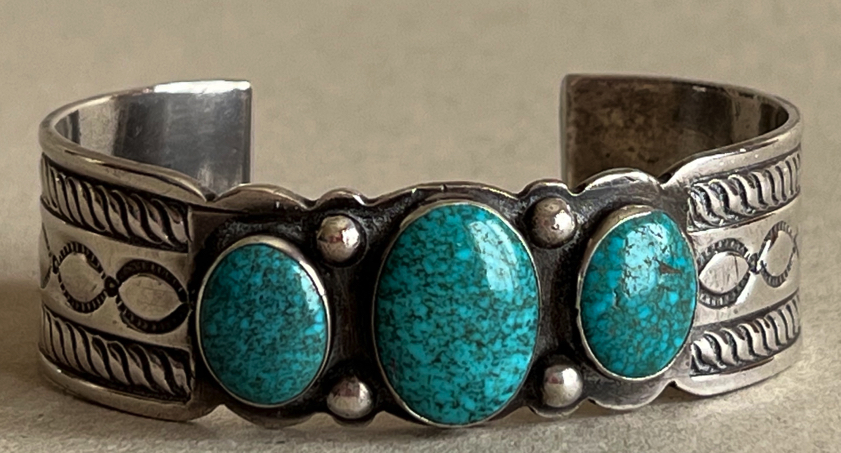
The bracelet’s silver shank is 3/4” wide at its widest point and it is 1/16” in thickness. The bracelet’s inner circumference end-to-end is 5 1/2” and the gap between the terminals is 1 1/8” for a total interior circumference of
6 5/8”. The bracelet weighs a very comfortable and wearable 48 grams or 1 3/4 ounces and it is in excellent original condition. There is a small piece missing from the silver bezel of one of the side turquoise stones which can be clearly seen in the pictures here. This is of no particular consequence and the stone is completely secure in its bezel.
The three gorgeous high-grade turquoise stones are clearly the stars of this entire execution and all the other details are arranged to show them off to their best possible advantage. The stones are beautifully-matched and perfectly graduated and their placement in tight formation in the bracelet’s center serves to accentuate and heighten their beauty which is even further set off by the large applied-silver “raindrops” between the stones and the three rows of fine stamp work decoration along both sides of them.
This bracelet is a rare and outstanding piece in every way; characterized by outstanding beauty, outstanding craftsmanship, outstanding stones and the outstanding Navajo artist, whether Ambrose Roanhorse himself
or not, who created it.
Price $2,450
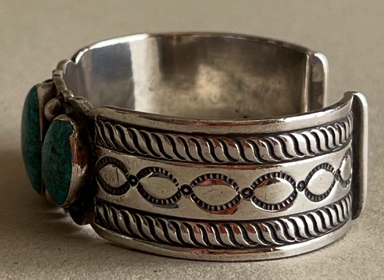
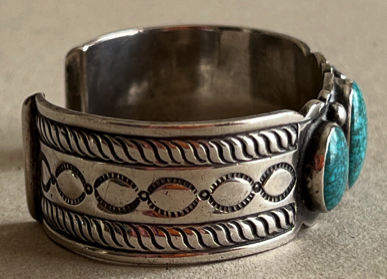
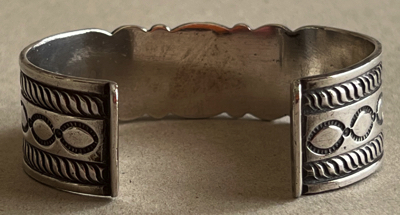
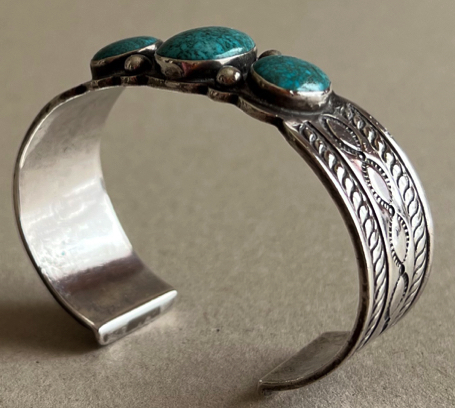
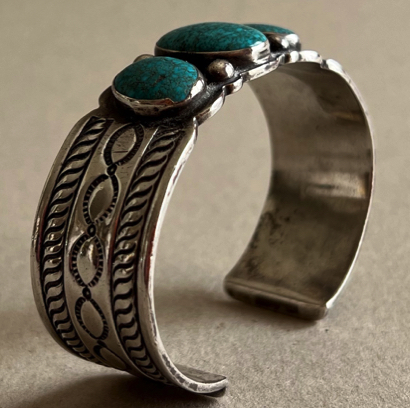
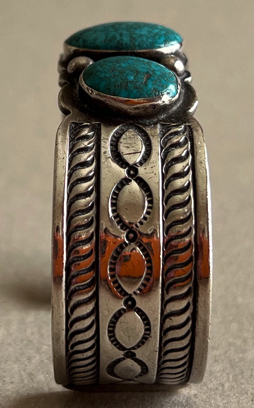
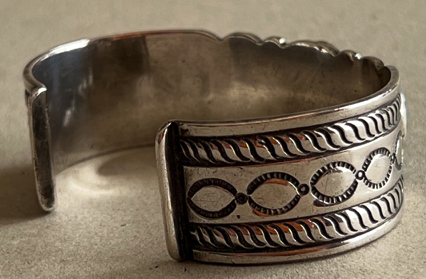
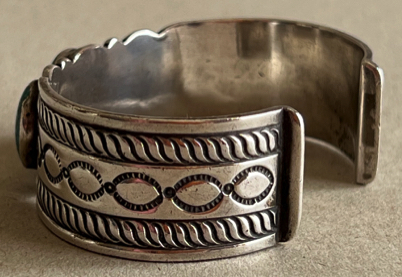
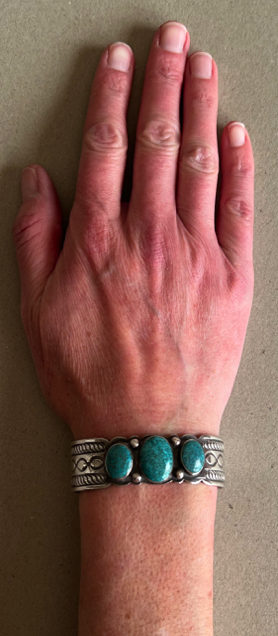
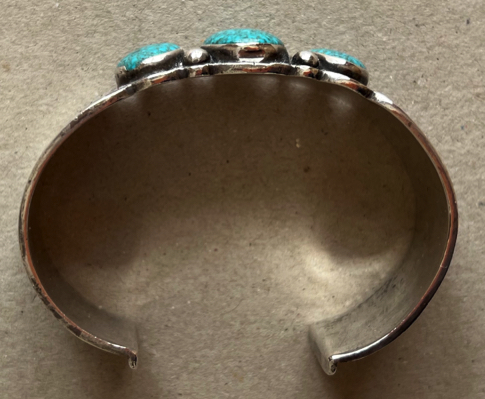
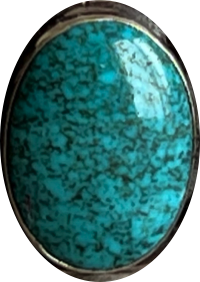
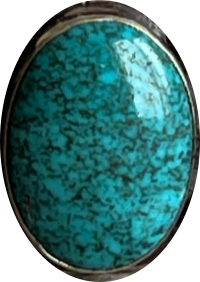
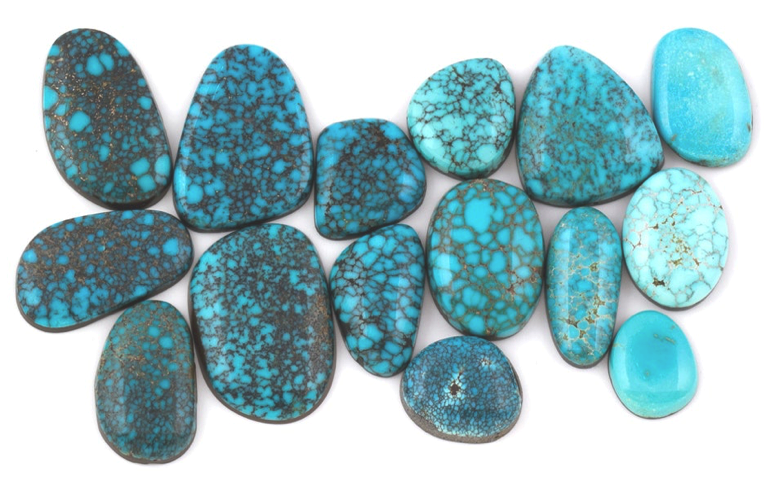
Lone Mountain Turquoise
This mine once produced a great variety of turquoise, included some of the finest examples of spider web turquoise as well as clear, deep-blue stones. Lone Mountain turquoise has always been noted for holding its color. Among all “classic” Southwestern turquoise, only Lander Blue is more valuable. A rare occurrence has been the “fossil turquoise” found in this mine. The fossil is of a crinoid stem. The Lone Mountain mine consists of a series of haphazard tunnels dug by miners chasing the veins of turquoise. The mine was claimed by Lee Hand in 1920 first as the Blue Jay Mining Lode and later, after seeing that so many mines had been named Blue Jay, Hand changed the mine’s name to Lone Mountain. In the 1960’s Lone Mountain was converted to a small open pit operations by Menliss Winfield. It continues to be mined in this fashion today. In 1979, I purchased Lone Mountain with the King family of Austin, Texas and Santa Fe, New Mexico. I have had different partners over the years and the property has only been mined 6 over the last 28 years. The reason for this is the expense of mining and the regulations for small mine owners, makes it very difficult to be profitable. But with the value of the classic American turquoise mines being so great, it is feasible for this great mine to once again be of great value.
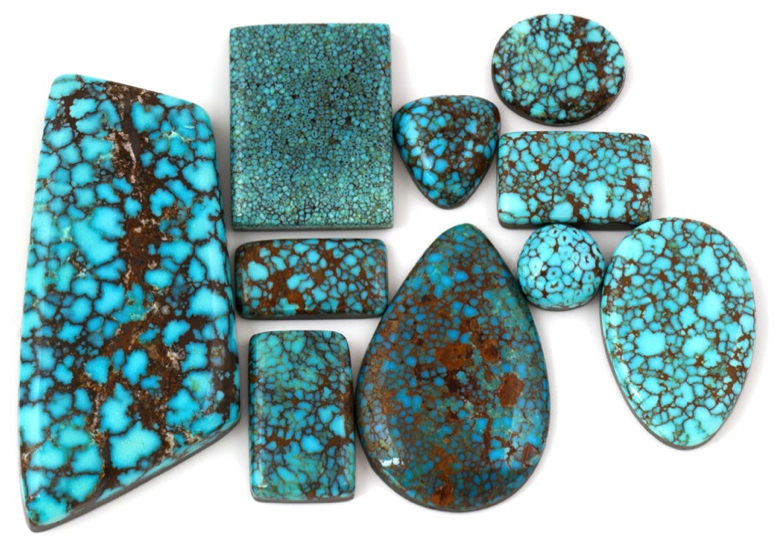
Nevada Blue Turquoise
Nevada Blue belongs with the finest turquoise to come out of Nevada. Once known as the Pinto or Watts mine, the Nevada Blue is near the crest of the Shoshone Range in Lander County, Nevada. The deposit was discovered by Jim Watts in 1901 and later sold. Access to this mine is extremely difficult. In its high-grade form the colors range from a medium to a dark blue with a black or brown spider webbing. Nevada Blue turquoise was well marketed in the 1970’s and was used by many of the Southwest’s greatest silversmiths. The April 1979 issue of ‘Arizona Highways’ magazine will attest to that fact with its pages filled with Nevada Blue turquoise in museum quality jewelry.
-Lone Mountain and Nevada Blue turquoise photos and descriptions source and © Waddell Gallery, Scottsdale, AZ
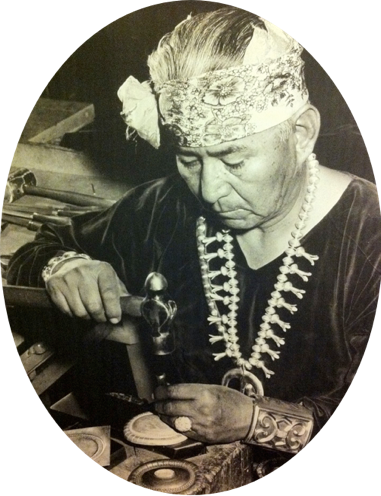
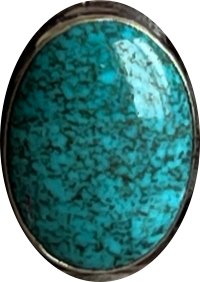
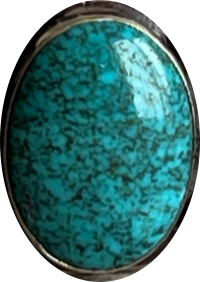
In his esteemed position as the “Beshlakai Nataani” or leading silversmith of the Navajo Nation, Roanhorse would have had ready access to the finest materials and stones available. The Lone Mountain Mine first began producing its unique spiderweb turquoise in the late 1920’s and The Nevada Blue Mine then known as the Watts or Pinto Mine began mining their fine stones even earlier.
In our view, Roanhorse would have most likely made this bracelet sometime in the 1930’s…it is slightly more traditional in its style and presentation format than the more Modernist, mostly all-silver streamlined style that he developed later in the 1940’s and which became the overall design direction of the Navajo Guild’s silverwork and later that of The White Hogan Shop under the direction of Roanhorse's former student at the Fort Wingate Indian school and lifelong friend and colleague, Kenneth Begay. It is possible that the bracelet might have been made in the 1950’s in a somewhat more traditional style than what the Navajo Guild or White Hogan were doing at that time however if Roanhorse made this bracelet in the 1950’s he would most likely have signed it, so our vote is still for the earlier
time frame of the 1930's.
Ambrose Roanhorse, c. 1940